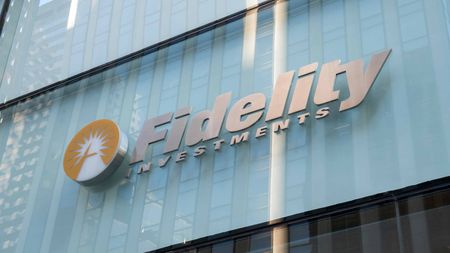Safe Harbor in Emerging Market Debt?
With newfound discipline and quality, developing nation bonds can be a good investment. We like Fidelity New Markets Income.
Fear not emerging market debt any longer, investors. In the 1990s, this briar patch of the bond market was as hazardous as a minefield, but the improving quality of issuers and their offerings and a decline in price volatility have made it safer ground. Now, “emerging market debt could have a role in even the most conservative portfolios,” says Lord Abbett market strategist Milton Ezrati.
Discipline has come to the once unruly markets of rapidly developing countries, Ezrati says. More governments have shunned inflationary monetary policies and irresponsible fiscal actions that worried bond investors. Emerging nations’ efforts to tame inflation and build cash reserves has instilled more confidence among investors. “Inflation rates among emerging economies have dropped from annual rates of 15%, 20% and 25% during the late 1990s to around 5% on average,” Ezrati says.
Emerging market debt has also improved in quality. More than 44% of the market value of the J.P. Morgan Emerging Market Bond index is investment-grade debt, Ezrati says, up from 30% in 2002 and only about 5% in the late 1990s. As the quality of the debt has improved, yields have shrunk because there is less risk of default. “Emerging market spreads doubtlessly will gyrate back up at some point,” Ezrati says, but “the issuers of this debt are not as dangerous as they once were.” The volatility of emerging- markets bonds is barely higher than that of high-yield bonds in the U.S., he says.

Sign up for Kiplinger’s Free E-Newsletters
Profit and prosper with the best of expert advice on investing, taxes, retirement, personal finance and more - straight to your e-mail.
Profit and prosper with the best of expert advice - straight to your e-mail.
Bond investors have certainly noticed the progress. Last year, a record $6.2 billion flowed into emerging-markets debt funds, according to Emerging Portfolio Fund Research.
Closed-end funds usually offer a way to buy emerging market debt with a margin of safety. Unlike traditional, or open-end, funds, closed-end funds issue a fixed number of shares. Those shares trade like stocks, but they can sell for more or less than the assets the funds hold. That means you can sometimes buy closed-end fund shares at a discount to the value of their underlying holdings.
As of April 5, in fact, closed-end funds that specialize in emerging-markets bonds traded, on average, at a 7% discount to net asset value (NAV), according to fund research firm Lipper. Discounts for a number of closed-end developing-market bond funds have grown because a lot of these funds have cut dividends, says Wachovia Securities analyst Mariana Bush.
The simplest way to add emerging-market debt to your portfolio is through an open-end fund. Perhaps the best choice is Fidelity New Markets Income(symbol FNMIX). John Carlson has run the fund since 1995. He buys a broad range of emerging-market debt, preferring countries that attract direct investment from foreigners. Over the past ten years through April 1, the fund returned an annualized 12%. That’s an average of nearly one percentage a year higher than the typical open-end emerging-market bond fund. New Markets Income yields 5.7% and has a below average expense ratio of 0.90%.
Get Kiplinger Today newsletter — free
Profit and prosper with the best of Kiplinger's advice on investing, taxes, retirement, personal finance and much more. Delivered daily. Enter your email in the box and click Sign Me Up.
-
 April RMD? Five Tax Strategies to Manage Your 2025 Income
April RMD? Five Tax Strategies to Manage Your 2025 IncomeTaxable Income The April 1, 2025, deadline for required minimum distributions (RMDs) is fast approaching for retirees who turned 73 in 2024.
By Kelley R. Taylor Last updated
-
 Rising AI Demand Stokes Undersea Investments
Rising AI Demand Stokes Undersea InvestmentsThe Kiplinger Letter As demand soars for AI, there’s a need to transport huge amounts of data across oceans. Tech giants have big plans for new submarine cables, including the longest ever.
By John Miley Published
-
 White House Probes Tracking Tech That Monitors Workers’ Productivity: Kiplinger Economic Forecasts
White House Probes Tracking Tech That Monitors Workers’ Productivity: Kiplinger Economic ForecastsEconomic Forecasts White House probes tracking tech that monitors workers’ productivity: Kiplinger Economic Forecasts
By Matthew Housiaux Published
-
 The 5 Best Actively Managed Fidelity Funds to Buy Now
The 5 Best Actively Managed Fidelity Funds to Buy Nowmutual funds In a stock picker's market, it's sometimes best to leave the driving to the pros. These Fidelity funds provide investors solid active management at low costs.
By Kent Thune Last updated
-
 The 12 Best Bear Market ETFs to Buy Now
The 12 Best Bear Market ETFs to Buy NowETFs Investors who are fearful about the more uncertainty in the new year can find plenty of protection among these bear market ETFs.
By Kyle Woodley Published
-
 Investing in Emerging Markets Still Holds Promise
Investing in Emerging Markets Still Holds PromiseEmerging markets have been hit hard in recent years, but investors should consider their long runway for potential growth.
By James K. Glassman Published
-
 Don't Give Up on the Eurozone
Don't Give Up on the Eurozonemutual funds As Europe’s economy (and stock markets) wobble, Janus Henderson European Focus Fund (HFETX) keeps its footing with a focus on large Europe-based multinationals.
By Rivan V. Stinson Published
-
 Stocks: Winners and Losers from the Strong Dollar
Stocks: Winners and Losers from the Strong DollarForeign Stocks & Emerging Markets The greenback’s rise may hurt companies with a global footprint, but benefit those that depend on imports.
By Anne Kates Smith Published
-
 Vanguard Global ESG Select Stock Profits from ESG Leaders
Vanguard Global ESG Select Stock Profits from ESG Leadersmutual funds Vanguard Global ESG Select Stock (VEIGX) favors firms with high standards for their businesses.
By Rivan V. Stinson Published
-
 Kip ETF 20: What's In, What's Out and Why
Kip ETF 20: What's In, What's Out and WhyKip ETF 20 The broad market has taken a major hit so far in 2022, sparking some tactical changes to Kiplinger's lineup of the best low-cost ETFs.
By Nellie S. Huang Published